
How to Use Gravity: Lightning Distance Sensor: Examples, Pinouts, and Specs
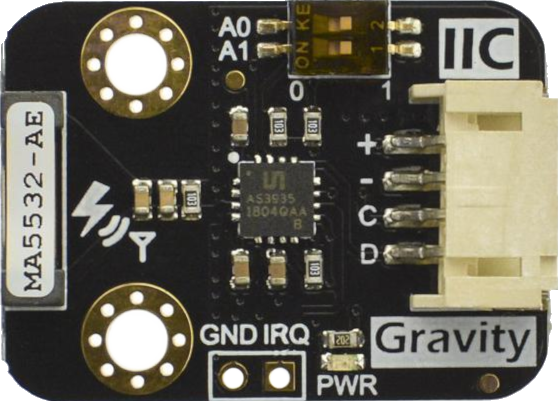
 Design with Gravity: Lightning Distance Sensor in Cirkit Designer
Design with Gravity: Lightning Distance Sensor in Cirkit DesignerIntroduction
The Gravity: Lightning Distance Sensor (SEN0290), manufactured by DFROBOT, is a highly sensitive sensor designed to measure the distance to lightning strikes. It operates by detecting the electromagnetic waves generated during a lightning event and provides real-time data for safety and weather monitoring applications. This sensor is ideal for use in weather stations, outdoor safety systems, and educational projects.
Explore Projects Built with Gravity: Lightning Distance Sensor
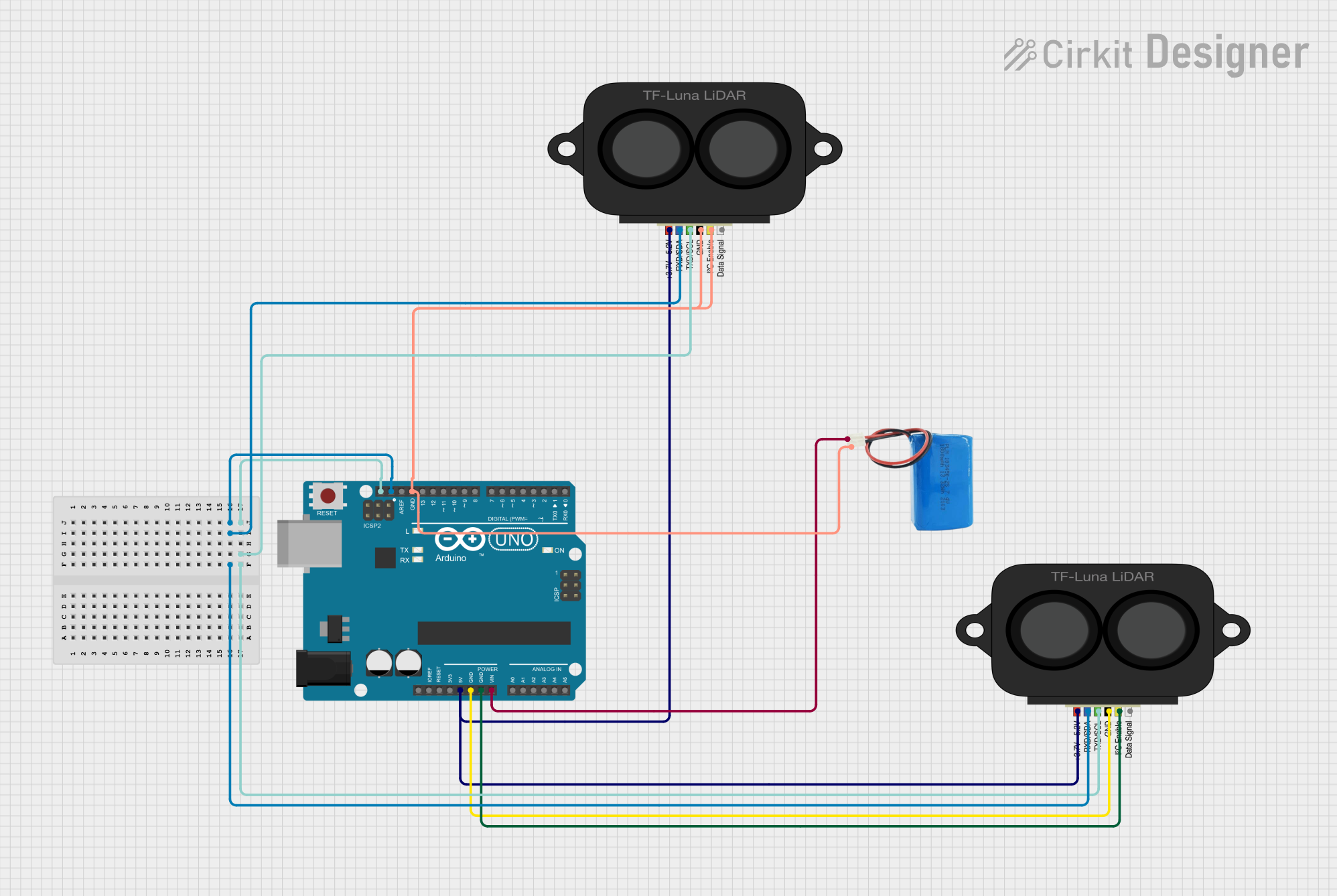
 Open Project in Cirkit Designer
Open Project in Cirkit Designer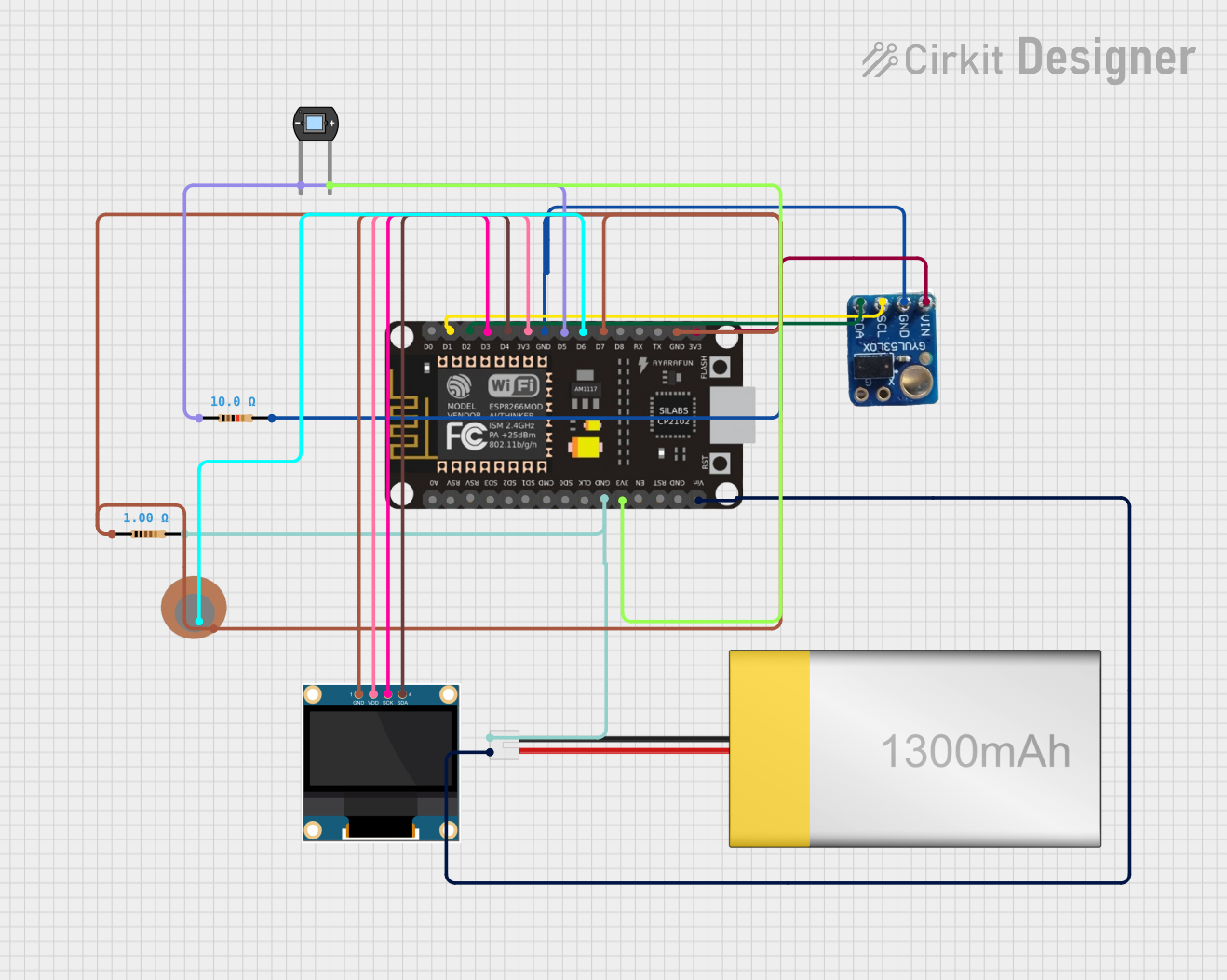
 Open Project in Cirkit Designer
Open Project in Cirkit Designer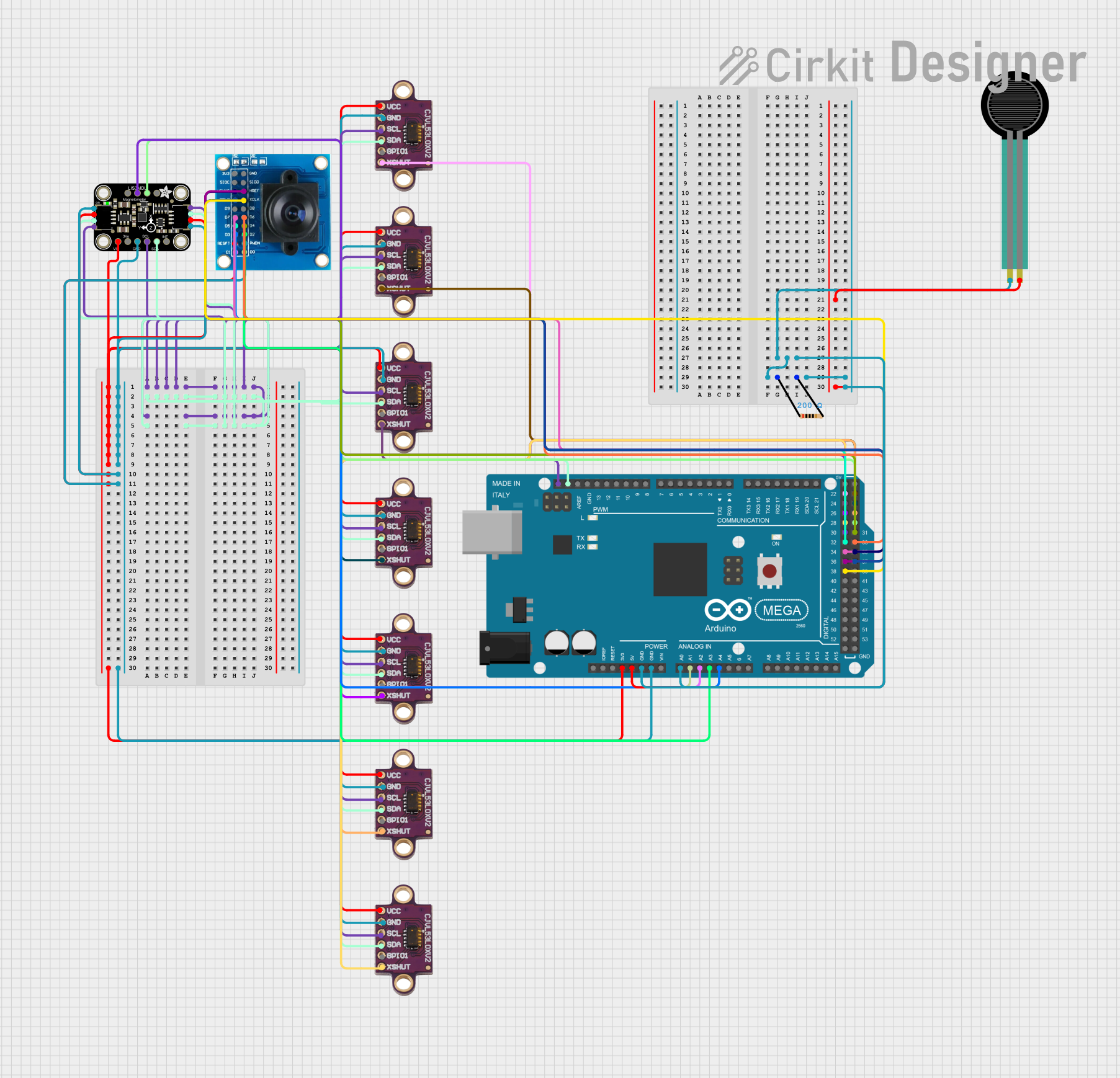
 Open Project in Cirkit Designer
Open Project in Cirkit Designer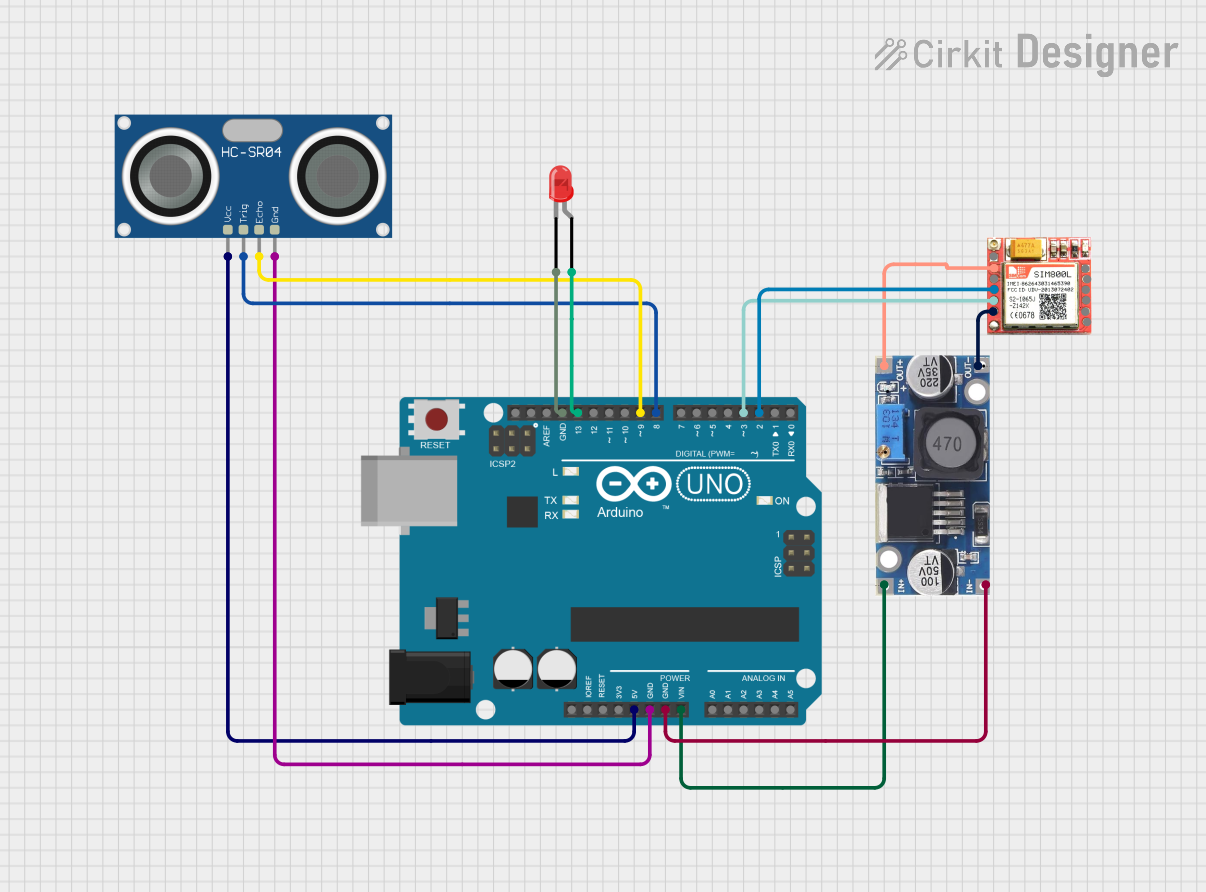
 Open Project in Cirkit Designer
Open Project in Cirkit DesignerExplore Projects Built with Gravity: Lightning Distance Sensor

 Open Project in Cirkit Designer
Open Project in Cirkit Designer
 Open Project in Cirkit Designer
Open Project in Cirkit Designer
 Open Project in Cirkit Designer
Open Project in Cirkit Designer
 Open Project in Cirkit Designer
Open Project in Cirkit DesignerCommon Applications
- Weather monitoring and forecasting systems
- Outdoor safety and lightning alert systems
- Educational and research projects
- IoT-based weather stations
Technical Specifications
The following table outlines the key technical details of the Gravity: Lightning Distance Sensor:
| Parameter | Specification |
|---|---|
| Operating Voltage | 3.3V to 5.5V |
| Operating Current | < 100µA |
| Communication Interface | I2C |
| Detection Range | 0 to 40 km (distance to lightning) |
| Frequency Range | 500 kHz to 40 MHz |
| Operating Temperature | -40°C to 85°C |
| Dimensions | 30mm x 22mm |
Pin Configuration and Descriptions
The sensor features a 4-pin Gravity interface for easy connection. The pinout is as follows:
| Pin | Name | Description |
|---|---|---|
| 1 | VCC | Power supply (3.3V to 5.5V) |
| 2 | GND | Ground |
| 3 | SDA | I2C data line |
| 4 | SCL | I2C clock line |
Usage Instructions
Connecting the Sensor
- Connect the VCC pin to a 3.3V or 5V power source.
- Connect the GND pin to the ground of your circuit.
- Connect the SDA and SCL pins to the corresponding I2C pins on your microcontroller (e.g., Arduino UNO: A4 for SDA, A5 for SCL).
- Ensure proper pull-up resistors (typically 4.7kΩ) are used on the I2C lines if not already included in your setup.
Using with Arduino UNO
The Gravity: Lightning Distance Sensor is compatible with Arduino boards. Below is an example code snippet to get started:
#include <Wire.h>
// I2C address of the sensor
#define SENSOR_ADDR 0x03
void setup() {
Wire.begin(); // Initialize I2C communication
Serial.begin(9600); // Start serial communication for debugging
Serial.println("Lightning Distance Sensor Initialized");
}
void loop() {
Wire.beginTransmission(SENSOR_ADDR); // Start communication with sensor
Wire.write(0x00); // Request data (register 0x00 for distance)
Wire.endTransmission();
Wire.requestFrom(SENSOR_ADDR, 1); // Request 1 byte of data
if (Wire.available()) {
int distance = Wire.read(); // Read the distance value
Serial.print("Lightning detected at distance: ");
Serial.print(distance);
Serial.println(" km");
}
delay(1000); // Wait 1 second before next reading
}
Important Considerations
- Ensure the sensor is placed in an open area for accurate lightning detection.
- Avoid placing the sensor near strong electromagnetic interference sources, such as motors or high-frequency devices.
- Use proper shielding for the sensor and cables in noisy environments.
Troubleshooting and FAQs
Common Issues and Solutions
No data or incorrect readings:
- Verify the I2C connections (SDA, SCL) and ensure they are properly connected to the microcontroller.
- Check the power supply voltage (3.3V to 5.5V) and ensure it is stable.
- Confirm the I2C address (default: 0x03) matches the one in your code.
Sensor not detected:
- Use an I2C scanner sketch to confirm the sensor's address.
- Ensure pull-up resistors are present on the I2C lines.
Inconsistent distance readings:
- Ensure the sensor is not placed near strong electromagnetic interference sources.
- Check for proper grounding in your circuit.
FAQs
Q: Can this sensor detect other types of electromagnetic waves?
A: No, the sensor is specifically designed to detect electromagnetic waves generated by lightning strikes.
Q: What is the maximum detection range?
A: The sensor can detect lightning strikes up to 40 km away.
Q: Can I use this sensor with a 3.3V microcontroller?
A: Yes, the sensor supports an operating voltage range of 3.3V to 5.5V, making it compatible with both 3.3V and 5V systems.
Q: Is the sensor weatherproof?
A: No, the sensor itself is not weatherproof. It should be housed in a weatherproof enclosure for outdoor use.
By following this documentation, you can effectively integrate the Gravity: Lightning Distance Sensor into your projects for reliable lightning detection and distance measurement.